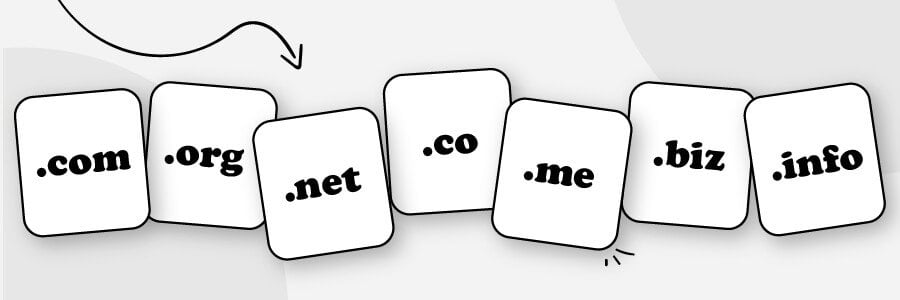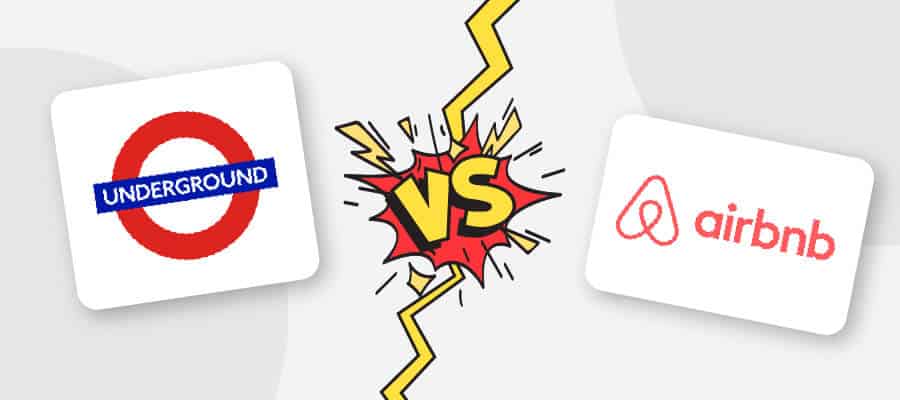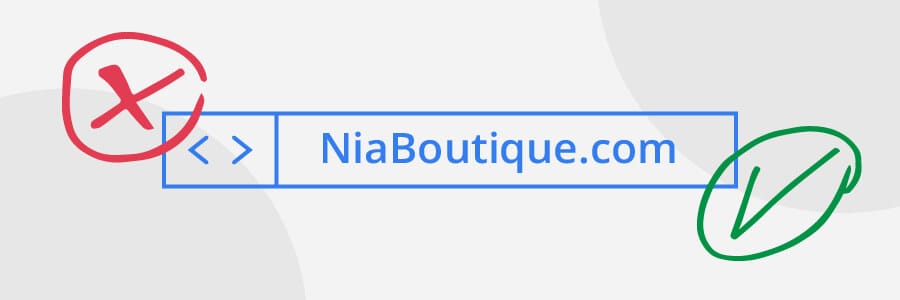
Choosing the right domain name is important as it can significantly impact the success of your business, both in terms of branding and the ability to be found in search engines.
A domain name must be memorable, fit your niche, and engage your audience. So it’s understandable if you are struggling to get it right.
In this article, I’ve broken down the process into 6 simple steps (plus a helpful bonus tip). By the end, you will have all the tips and tools you need to choose a domain name that is perfect for your business.
Let’s get you the perfect domain.
What’s in a name?
In this case, a domain name is comparable to a digital zip code. It helps search engines find and direct people to your website, similar to a GPS providing a route to a physical address.
But that’s where the similarity ends. A domain name is much more than just how people find your business; it’s often the reason why people choose your business in the first place
1. First impressions matter. Your URL is what a user looks at when they see a listing. Get your domain name right and it’ll make a great first impression. Get it wrong and people won’t give your listing a second glance.
2. Helps with SEO. EMDs (exact match domains) are no longer a necessity. However, using a keyword that reflects your website when choosing a domain name can help with SEO rankings.
3. Defines your brand. Your domain name is a powerful branding opportunity that, if done right, can increase brand recognition
The first step to getting your domain right is choosing a Top-Level Domain.
Top-Level Domain (TLD) is the suffix after the website address. Also known as domain name extensions, they’re the .com in Godaddy.com and .org in Wikipedia.org.
As you’ll find out when using a domain registrar (more on those in step 6), numerous TLD’S are available.
A top-level domain can heavily influence the viewers’ perception of your business by making it appear legitimate, trustworthy, and established.
Sure, .com accounts for 52.3% of the global TLDs, but that doesn’t mean you must use it. Given that it is so popular, it might not be available. Depending on your business model, another type of TLD could be a better choice.
One example of an alternative TLD includes a country code. Consider ‘.uk’ for the United Kingdom or ‘.ca’ for Canada. If you a national company and your business name is not available as a .com, then a country code would be a good alternative.
There are also generic TLDs such as ‘.photography,’ and ‘.edu.’ These are great for small businesses that provide a service or product to a niche market.
The most common TLD’s and how they are used


There are two types of domain names to choose from: Branded and generic. Generic domain names used to be all the craze because it included keywords to help rank highly in a search.
But things have changed and now branded domain names are what the public connects more to.
A branded domain name is unique and often uses clever wordplay that suits the brand it represents. perfect for evoking emotions and connecting with its target audience.
A good example of branded domain names includes Amazon.com, airbnb.com, and zoom.com. While their brand names aren’t overly descriptive, they sure are memorable.
A generic domain name typically uses keywords and is used to inform the specific service provided.
Houseinsurance.net and cheaphouseinsurance.com are generic. And while the domain clearly says what the companies offer, they’re unmemorable and don’t necessarily create a connection with the target audience.
That being said, there are instances when generic domains are better suited than branded ones.
Let’s say you are a local bakery and want to clearly express what service you provide. In that case, a generic yet descriptive name such as ‘kimsbakery.com’ works quite well.
And of course, there are pros and cons to both generic and branded domain names. Here are a few worth considering.
1. It is straight to the point and self-explanatory. Your audience will immediately know what your business offers.
2. Most descriptive domain names contain keywords that your audience will be searching for to find you.
3. It’s easy to remember. That way they will be able to easily search for you specifically.
1. Lacks brand personality.
2. Fails to express brand identity.
3. Ineffective for creating an emotional connection.
1. They’re unique and stand out from competitors.
2. Great for creating a cohesive brand identity across numerous platforms.
3. Perfect for engaging with your target audience.
1. As brandable domains are often non-descriptive, your target audience might not understand the service you offer.
2. At first, creating brand awareness can be a little more difficult and time-consuming, but it’s worth the effort.

Choosing a domain name for your business is no easy task. Fortunately, there are tools available to help you and we’ll look at them in the bonus step at the end of the post.
How do you choose a domain name that’s memorable when your business requires a more reserved URL?
In this case, you need strategies that ensure people remember you regardless of your domain- catchy or not.
First, keep your domain name short. If the URL is too long, it will be harder to remember. Statistics show the optimum domain name length is between 6 and 14 characters.
Second, it should be easy to pronounce and spell. Avoid using misspelled words and double letters.
Third, it should be easy to type in the search. Don’t confuse (and ultimately frustrate) searchers by choosing a domain that’s difficult to type. If .com is unavailable, avoid numbers or hyphens to get it. In that case, it’s better to use a different domain name or TLD.
It’s wise to think long-term when choosing your domain name. Otherwise, as your business grows, it could be held back by the very name chosen to support it.
For example, if you’re an e-commerce site selling yoga supplies, a natural progression would be to expand into the wellness market. But a generic domain name like `yogagear.com` would no longer be relevant.
Now is the time for some forward-thinking because changing your domain after you’ve established your company is bad for business. It can undermine your branding efforts, affect your SEO rankings, and ultimately cost you money.
A lot of people get this next step wrong, read on and make sure you don’t.

Most folks are under the impression that if a domain name registrar (like Godaddy.com) says their domain name’s available, they’re good to go. That isn’t necessarily the case.
You must dig a little deeper to ensure you avoid the three following domain registration mistakes.
1. Check it’s not trademarked. Let’s start with the obvious: If you use a trademarked domain, you may land yourself in court. Always run a trademark check before buying.
2. A domain under a different TLD. Just because a domain name’s available under another TLD doesn’t mean you’re free to use it. For example, Amazon.net could be available, but don’t think Amazon will stand by and let you run an eCommerce store using that domain. It’s because of brand confusion and usually ends up in court with the original brand holder winning out.
3. Social media profiles. You build brand recognition by using your domain name on all your marketing platforms, especially social media. Check your domain’s availability on all the popular platforms by running a domain name search.
The easiest way for people to find your business is by having all your listings under one domain.
Now the last step! Time to register your domain.
A domain name registrar such as Domain.com, GoDaddy.com, and Namecheap.com, are the best places to get registered.
Who you buy your domain from makes little difference; once registered, you own it.
However, the service registrars offer often varies. Some provide additional web and email hosting services while others do not, but the most essential difference is customer service standard.
Buying a domain and connecting an email address to your website’s DNS can be a complicated process. That’s when you need excellent customer care.
Also, remember that domain names sell quickly, so act before someone else takes it.
And always press the annual auto-renew button because if someone else snaps it up, expect to pay big bucks to get it back
Suppose you’re short on ideas and stuck coming up with a domain name for your new business. In that case, you can find inspiration by using a domain name generator.
These handy tools are great for brainstorming catchy names and turning ideas into highly memorable domains.
Now you have everything you need to create an engaging, memorable, brand-related, SEO-optimized domain name.
The only thing standing between you and a domain name that drives traffic to your website is a little effort and a lot of creativity.
Use the tips and recommendations I laid out to be sure to have a domain name that perfectly captures the nature of your business.
This portion of our website is for informational or educational purposes only. Tailor Brands is not a law firm, and the information on this website does not constitute legal advice. All statements, opinions, recommendations, and conclusions are solely the expression of the author and provided on an as-is basis. Accordingly, Tailor Brands is not responsible for the information and/or its accuracy or completeness. It also does not indicate any affiliation between Tailor Brands and any other brands, services or logos on this page.
Products
Resources
©2025 Copyright Tailor Brands